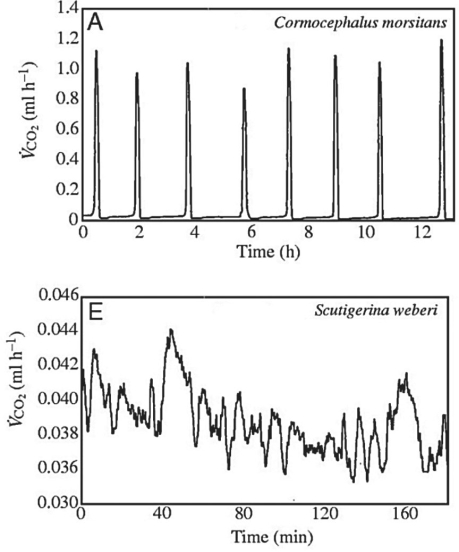Use the following information when answering the corresponding questions) .
Many terrestrial arthropods exchange gases with their environments by using tracheae, tubes that lead from openings called spiracles) in the animal's exoskeleton or cuticle directly to the animal's tissues. Some arthropods can control whether their spir opened or closed; opening the spiracles allows the carbon dioxide produced in the tissues to travel down the tracheae and be released outside the animal. Klok et al. measured the carbon dioxide emitted over time represented by VCO2) by several species of centipedes. Figure 31.2 presents graphs of their results for two species, Cormocephalus morsitans and Scutigerina weberi. C. J. Klok, R. D. Mercer, and S. L. Chown. 2002. Discontinuous gas- exchange in centipedes and its convergent evolution in tracheated arthropods.  Figure 31.2
Figure 31.2
-Look at the graph for Cormocephalus morsitans. What is the best interpretation of these results?
Definitions:
Q14: Which of the following characteristics would not
Q20: If a kelp farmer wanted to maximize
Q20: When is a cell considered differentiated?<br>A) when
Q23: Which of the following best describes primary
Q24: Identify the location of the disulfide bond
Q27: The text describes four ways, or tactics,
Q32: Which morphological trait evolved more than once
Q34: Which of the following is being replenished
Q35: The hypothesis that birds evolved from dinosaurs
Q43: In 1986, a nuclear power accident in